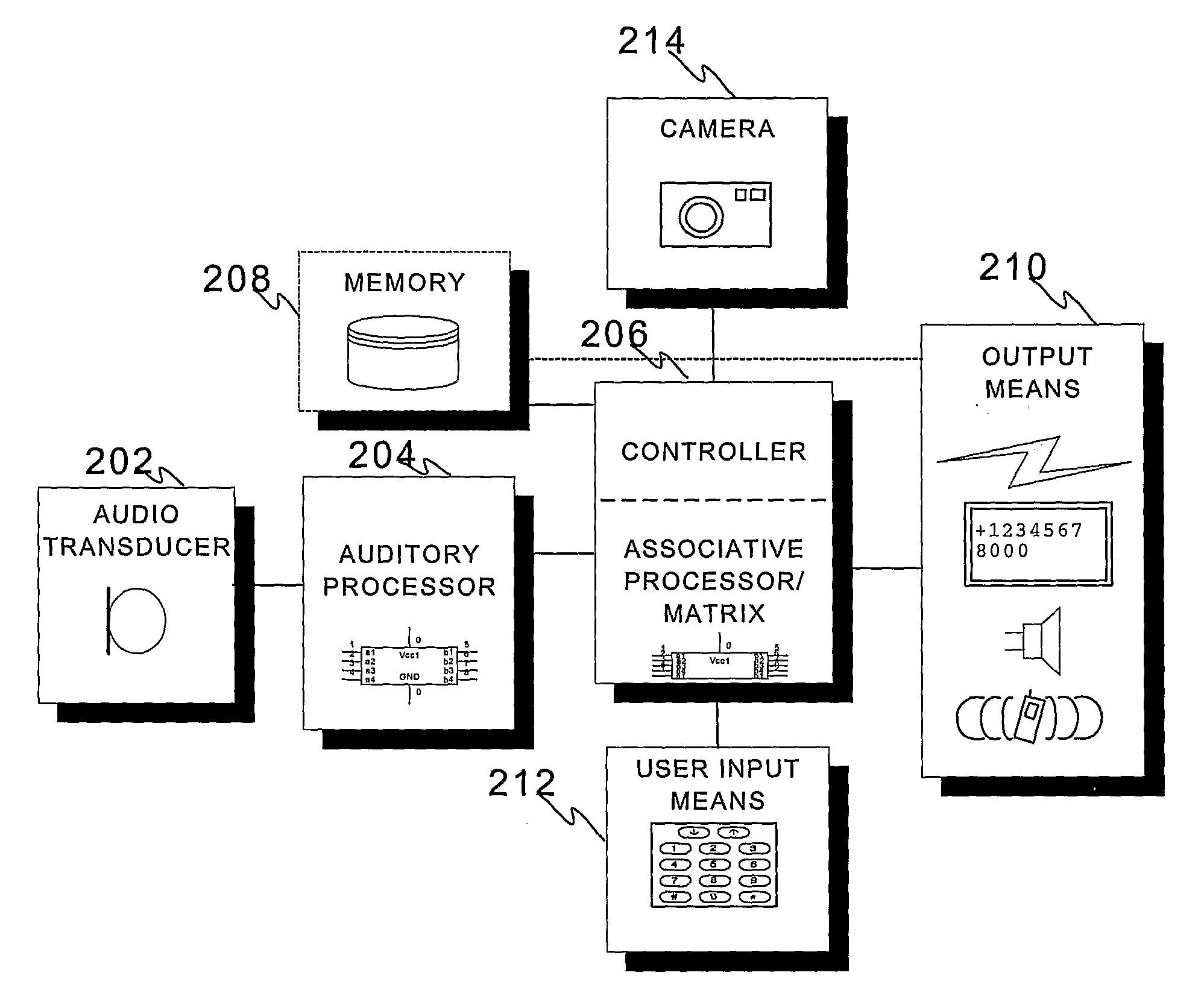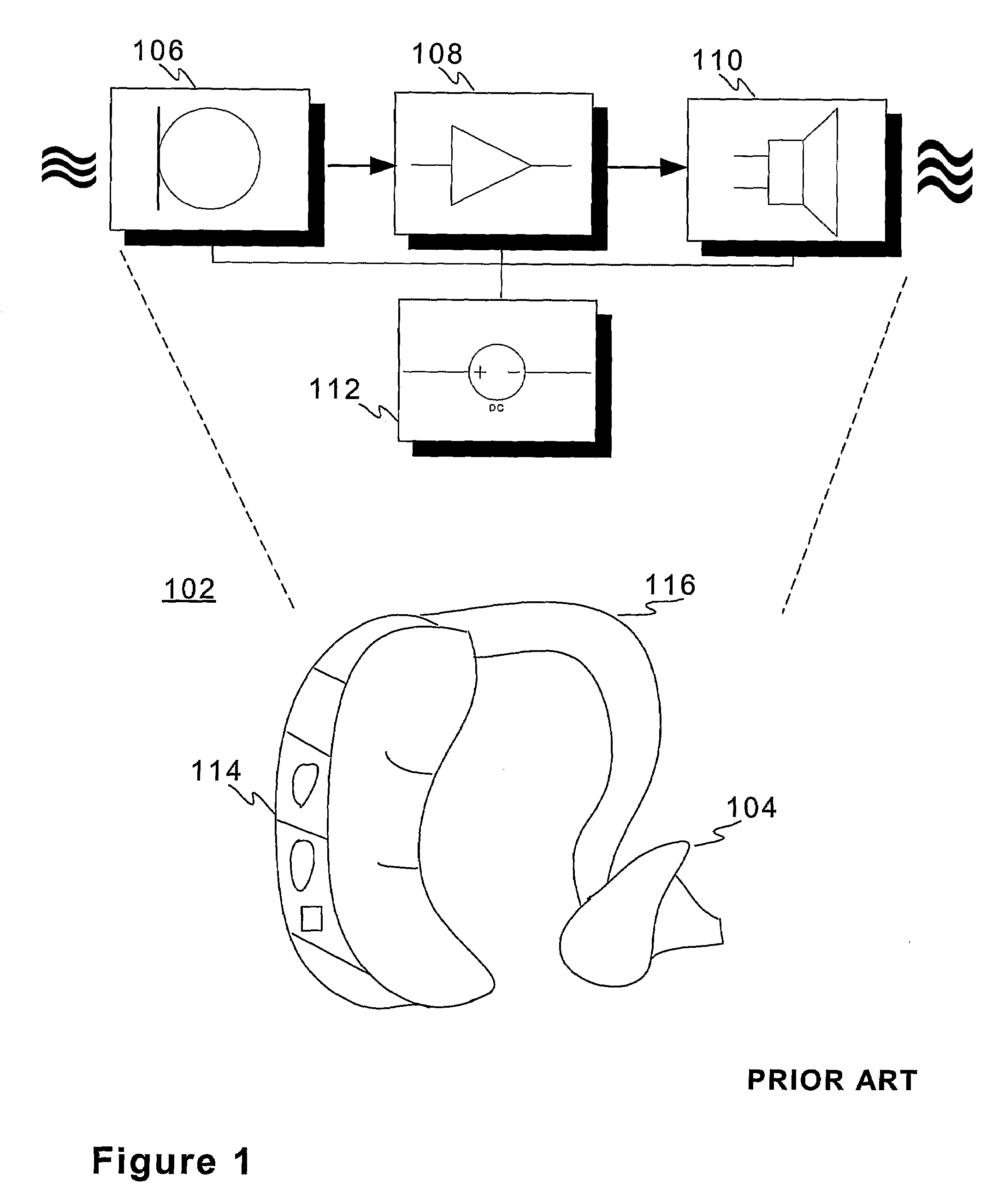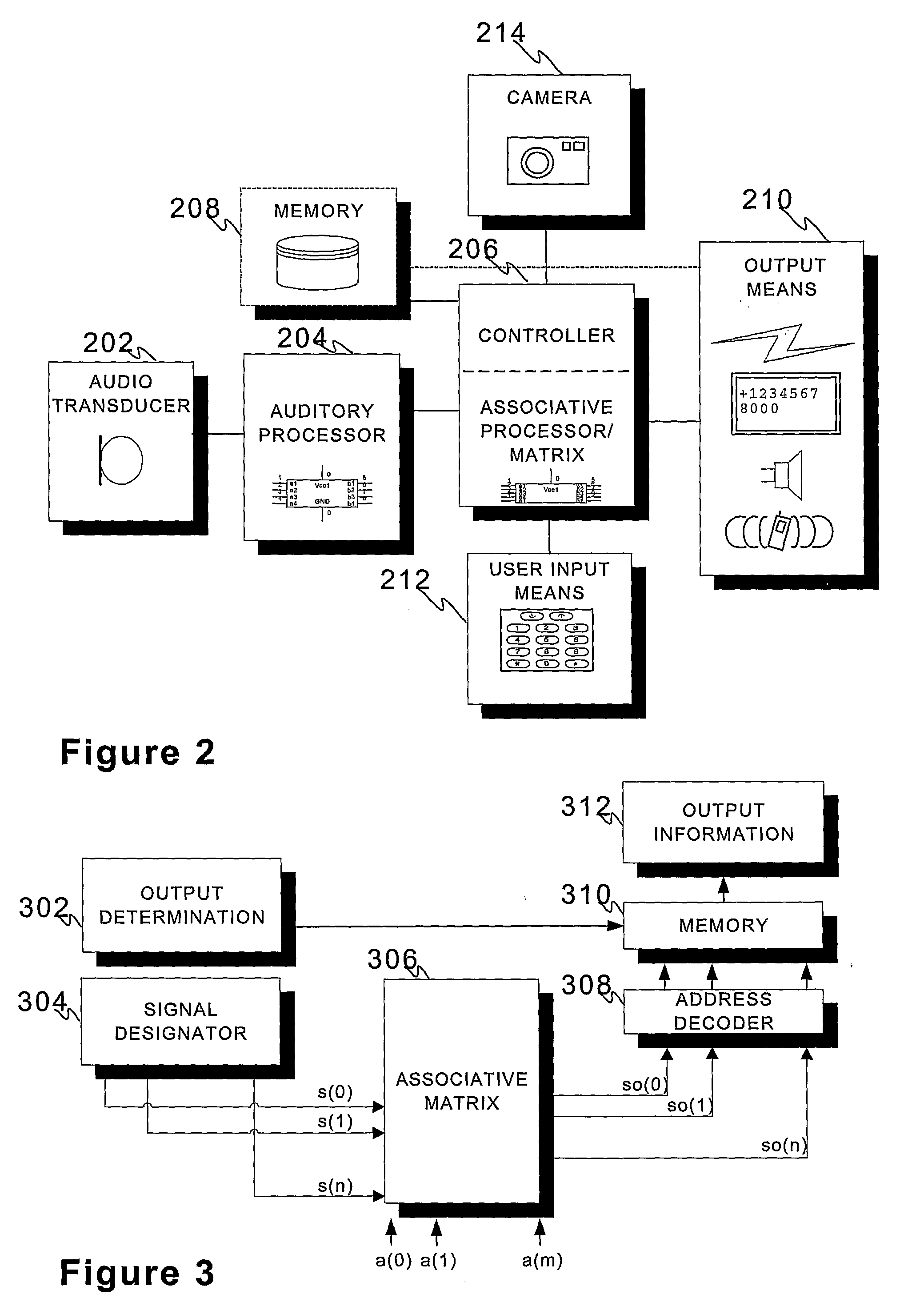Hearing Agent and a Related Method
a technology of hearing agent and related method, applied in the field of hearing agent, can solve the problems of affecting the general way of life, and affecting the general way of life, and achieves the effects of reducing the number of people who are disabled, consuming memory space only moderately, and fast software and hardware implementation
- Summary
- Abstract
- Description
- Claims
- Application Information
AI Technical Summary
Benefits of technology
Problems solved by technology
Method used
Image
Examples
second embodiment
[0047]One optional functional element of the agent is a still or a video camera 214 that is especially useful in the invention, wherein the recognized sound may direct the robot to take an image or a video of the sound source and provide the user with it either locally or via information transfer means. The sound source localization including at least direction estimation can be carried out through a microphone array comprising a plurality of microphones, for example, or other prior art localization arrangements.
[0048]From a high-level functional standpoint, the hearing agent listens to the environment by the sensor 202. The auditory processor 204 processes the sound information into a large array of auditory feature values that are preferably represented by binary signals. The processor 206 executes an associative process: during an initial training operation (first mode) it associates auditory feature signal arrays with desired information so that afterwards (second mode) these fe...
first embodiment
[0068]FIG. 4 depicts the scenario of the invention. A person 402 with impaired hearing is crossing a street on his own thoughts and does not hear the sound of an incoming lorry 404. Fortunately he is a carrying a portable device 406 such as a mobile terminal or a PDA with him, the device 406 being equipped with the hearing agent arrangement of the invention. Due to an activated monitoring process the device 406 receives environmental sounds, funnels them into the associative matrix and recognizes the sound of the approaching lorry as traffic noise. The person 402 may have trained the device 406 by himself due to being aware of his occasional inattention outdoors together with the hearing defect causing sometimes dangerous situations. Alternatively, the device 406 may have been factory-programmed to recognize car noise, for example. The device 406 alerts the user by the combination of vibration, an exceptionally loud ring tone, and a message “CAR NOISE” shown on the display. The vibr...
PUM
 Login to View More
Login to View More Abstract
Description
Claims
Application Information
 Login to View More
Login to View More - R&D
- Intellectual Property
- Life Sciences
- Materials
- Tech Scout
- Unparalleled Data Quality
- Higher Quality Content
- 60% Fewer Hallucinations
Browse by: Latest US Patents, China's latest patents, Technical Efficacy Thesaurus, Application Domain, Technology Topic, Popular Technical Reports.
© 2025 PatSnap. All rights reserved.Legal|Privacy policy|Modern Slavery Act Transparency Statement|Sitemap|About US| Contact US: help@patsnap.com



